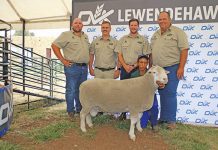SA programme race events are held on Saturdays. It makes sense to manage the training programme to “allow” your pigeons to peak on race day. Thus said, I need to inform readers immediately that I am against any training system that breaks the birds down before the race and builds them up just in time to “hit” form on race day. Many fanciers claim to successfully feed on a starvation diet that forces their pigeons to hurry home to a maple pea and a promise for more.
It’s called racing through the stomach, which in my books are cruel. The hunger method also ensures the birds trap into the loft much faster, as one turn around the loft at arrival is one turn too many. Often milliseconds can separate the times between the winning pigeons. Well-trained and disciplined birds, however, don’t hover around the loft on arrival – they fly with a mission.
It makes more sense to motivate a winning pigeon in a way that maintains its form for longer, rather than mismanaging its reserve energy so it’s over the top halfway through the season. Starvation diets are popular on the sprint races and “blow homes” when the wind literally blows them in on race days – extra weight is then rather a handicap. The disadvantages are legion. When a weightless bird makes a mistake on race day and sleeps out on a cold winter night, its form is destroyed for the season. Starved birds are also more prone to disease as their immunity is broken down, not built up.
Training on the edge raining on the edge may be an alternative to a starvation diet, but it depends on how extremely it’s used. In my books, it’s defined as feeding just enough to maintain form, supply body heat at night and still provide sufficient nutrition. he amount of food should be measured against the workload – less work, less food and more work, more food. Birds trained on the edge always need vitamin and mineral supplements.
The workload is slowed down closer to the race and while the feed is only marginally increased, extra vitamins are provided to boost form. C ertain feeding principles are also implemented. Barley is popular as it has a feeding value similar to mealies, but its fibre content prevents birds gaining unwanted weight. Barley and peas only on the return from the race allow for easy digestion and refuel protein. raining on the edge is to be restricted to sprint races where a burst of speed is needed, not used for stamina work or long hours on the wing.
Consider the type of bird When training a bird, consider its “type” of metabolism and inclusive genetic package. Certain families don’t gain a lot of weight regardless of how much they eat and most of these don’t overindulge at the food tray. Other families will stuff themselves and if left undisciplined, will turn into “meat palaces” or lazy slobs. Study the origin of your purchase when you buy it to learn about the needs of its metabolism. This is a neglected study.
We purchase quality stock on the auctions worldwide without knowing a thing about their race-preparation needs. When the trained offspring disappoints, we blame the seller. O btain the winning recipe from the fancier who sold you your prime stock pigeons, and buy your stock from a gene pool that’s been successful in your area or an area with similar conditions. Pigeons bred in cold climates are capable of breeding winners in hot and humid condition and vice versa, but their pedigree history must have the “correct” genetic make-up suited to your hand and training methods. – Thomas Smit ([email protected] or call (011) 680 4778)). |fw








